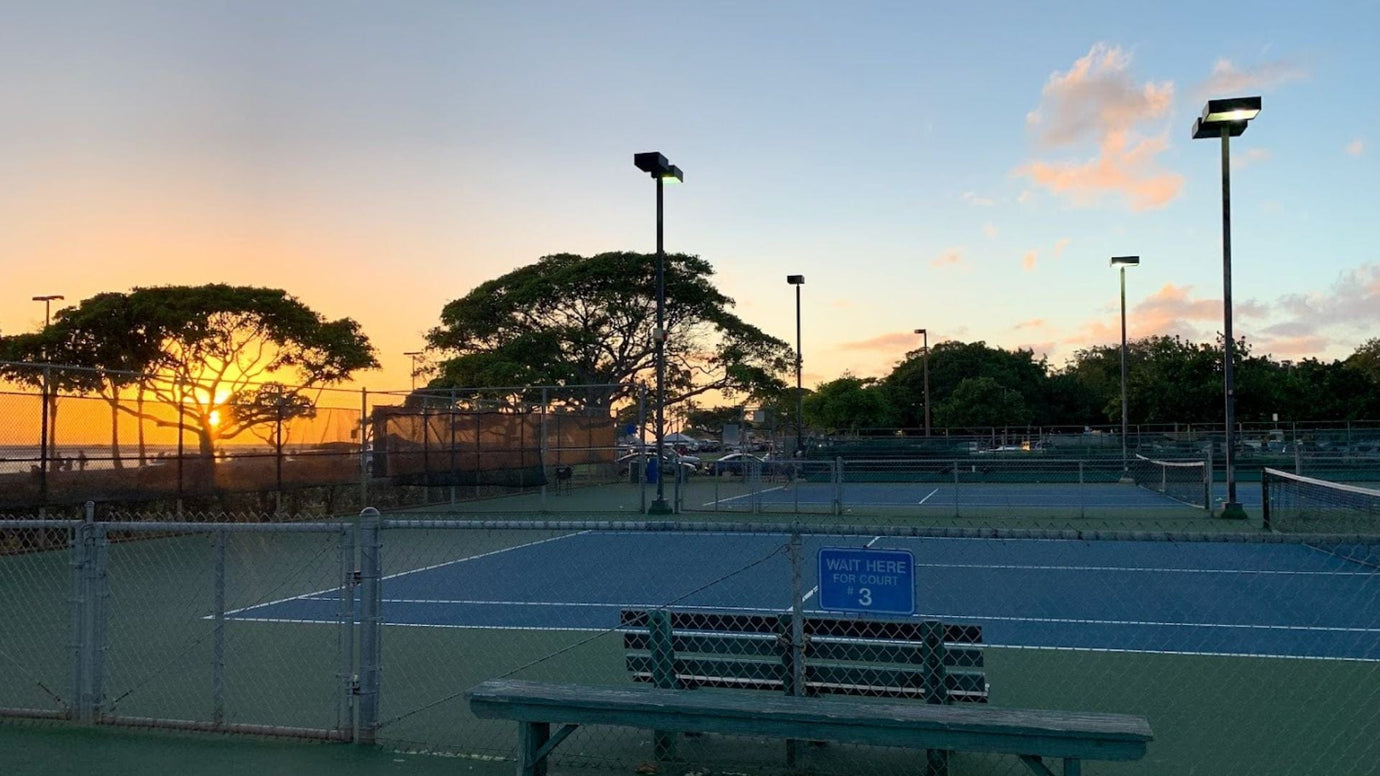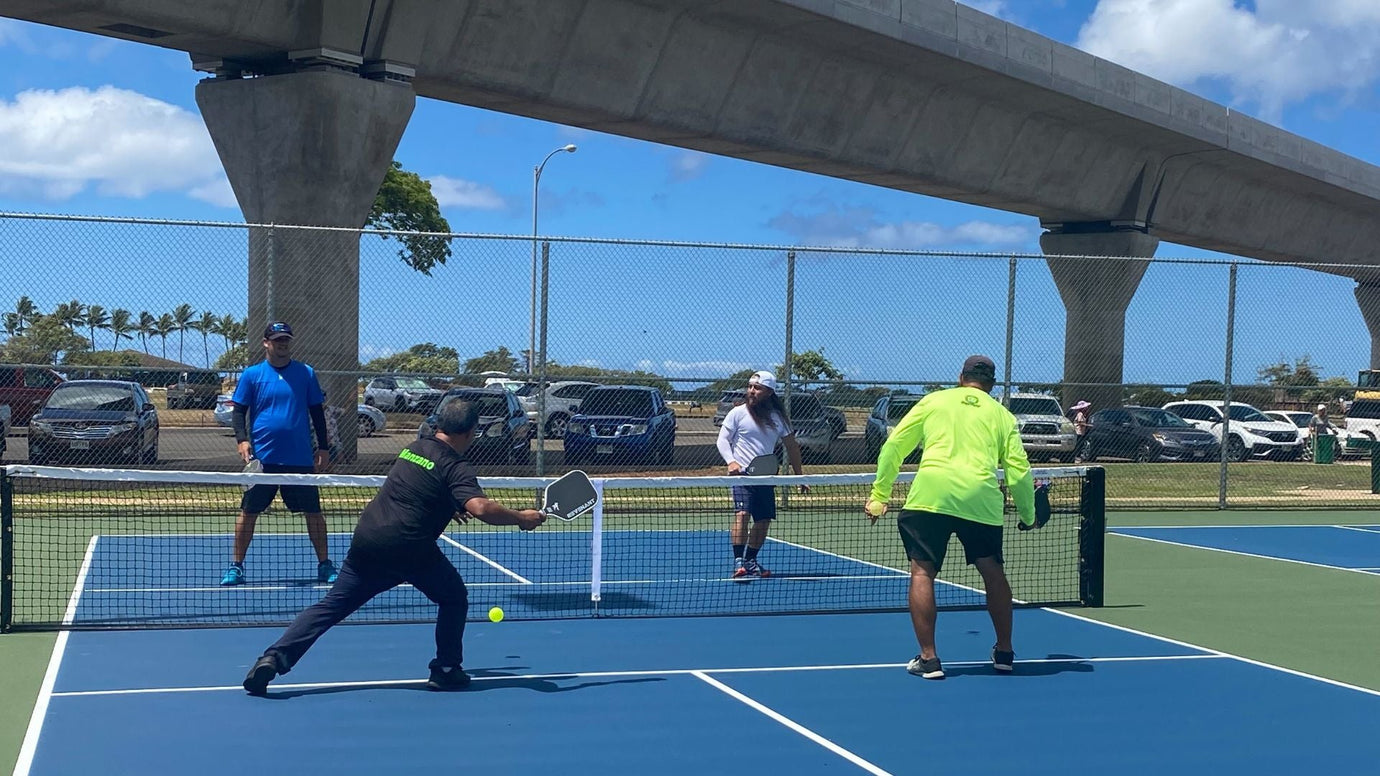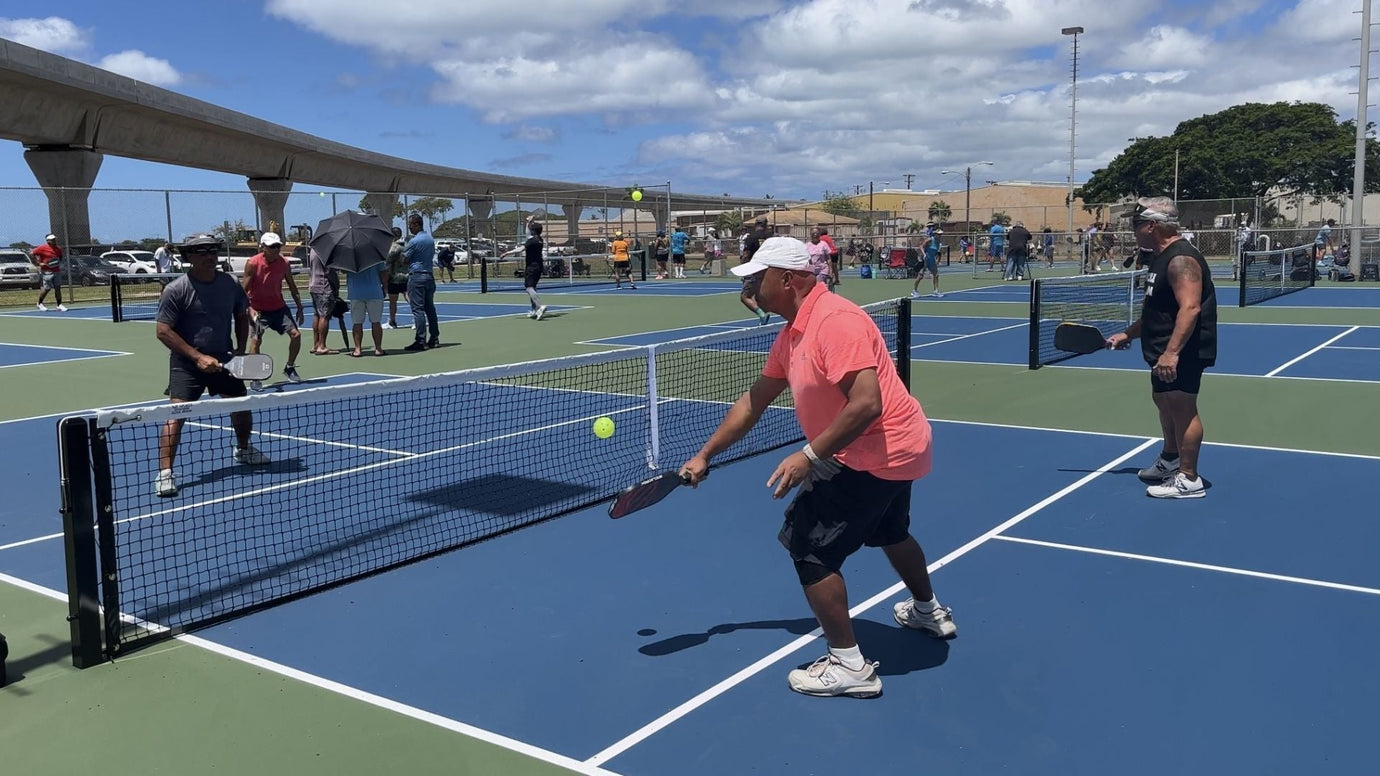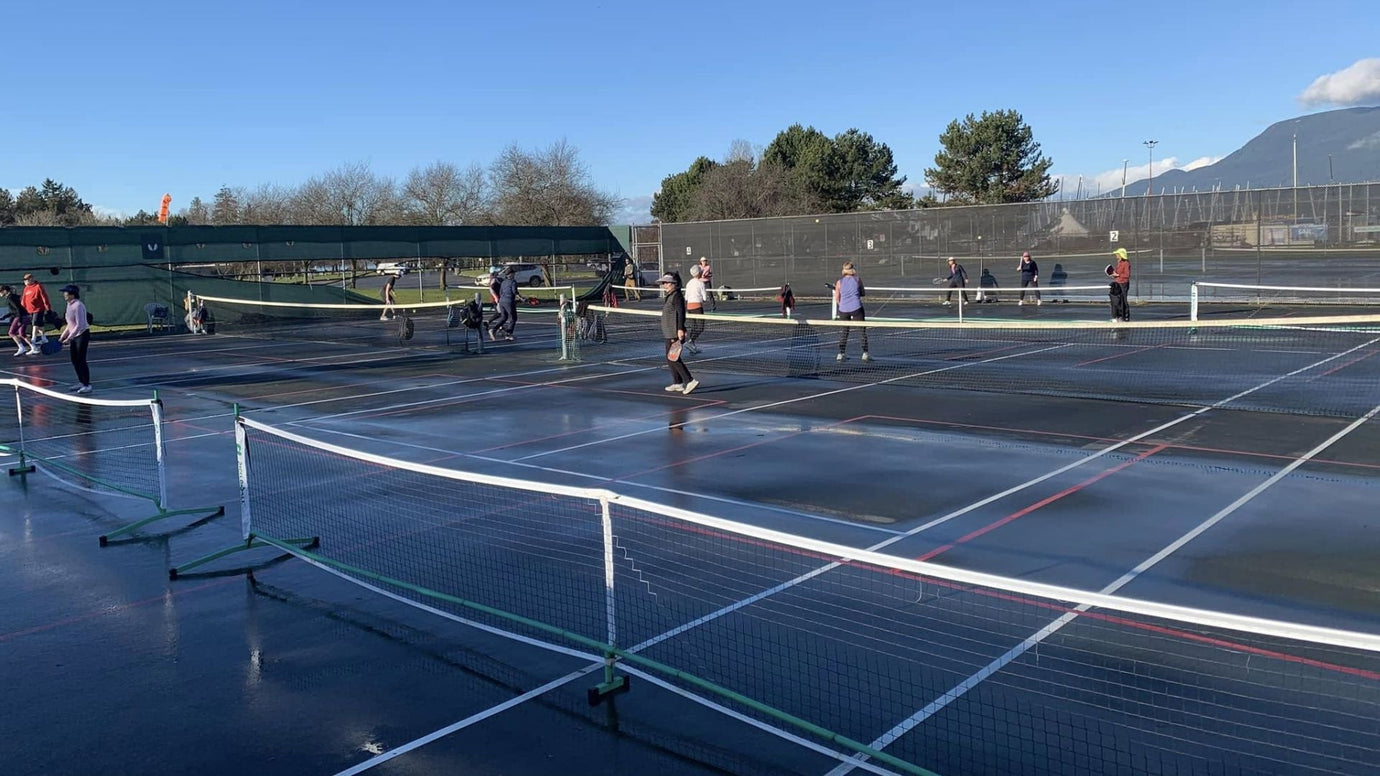Wondering what sets pickleball and padel apart? Here’s a clear breakdown of the differences—plus how to get started with either sport.
Court Differences
The first thing you’ll notice is the size.
A pickleball court measures 13.41 m by 6.09 m, while a padel court is larger at 20 m by 10 m.
The layouts also differ.
A padel court is similar to a tennis court, with two service boxes near the net. In pickleball, the service boxes are positioned at the baseline instead.
Pickleball has a unique feature called the “kitchen”—a no-volley zone that spans the entire width of the court, about 1.06 m on each side of the net.
But the biggest difference? The walls.
A padel court is surrounded by glass walls and a metal cage, with doors on both sides. You can actually use the walls during play, which often leads to longer, more strategic rallies.
Equipment Differences
Both sports require a ball and a racket, but they look and feel quite different.
Padel rackets are solid, perforated with holes, and typically made from carbon fiber or fiberglass. They’re shorter than a tennis racket but have a thicker head for absorbing impact. Racket shapes vary—round heads offer more control, while diamond shapes provide extra power.
Pickleball paddles are flat, solid, and usually made from lightweight materials like composite or graphite. They have a more rectangular shape, and the total length and width must not exceed 24 inches.
The balls differ too:
- Pickleball uses a lightweight plastic ball with 26–40 holes, designed for lower bounce—perfect for smaller courts.
- Padel uses a pressurized rubber ball similar to a tennis ball but slightly smaller and less bouncy.
Rule Differences
While both sports are often played in doubles, padel is almost always doubles.
Both start with a diagonal underhand serve into the opponent’s service box, and in both, the ball can only bounce once before it’s hit.
In padel, you can play shots off the walls—either letting the ball bounce off before returning it, or hitting it into the wall after it lands on your opponent’s side. If you hit it directly into the wall without it first bouncing in your opponent’s court, the ball is out.
Pickleball has a special rule called the two-bounce rule: the ball must bounce once on each side before volleys are allowed. Volleys can only be hit from outside the kitchen zone.
Scoring Differences
Padel scoring is just like tennis:
- Points go 15, 30, 40, then game.
- You must win six games (by at least two games) to take a set.
- At 40–40, it’s “deuce,” and you must win two consecutive points to take the game.
Pickleball uses a “first to 11, win by 2” system. The score is called in three numbers: your team’s score, your opponent’s score, and the server number (1 or 2).
Example: “5–3–2” means your team has 5 points, the other team has 3, and you’re on your second server.
Shot Differences
Many basic strokes—groundstrokes, volleys, and underhand serves—exist in both sports.
Padel, however, has unique shots like:
- La Chiquita – a soft, low shot that lands just over the net to push opponents back.
- La Bandeja – a slow, controlled smash that keeps the ball low after bouncing.
Pickleball has its own specialty shot:
- The dink – a delicate shot hit from near the net (often in the kitchen) that barely clears the net, forcing your opponent into a tough upward return.
Bottom line:
While pickleball and padel share some DNA, they each have unique court setups, gear, rules, and strategies. Whether you prefer the wall play and power of padel or the fast, close-quarters precision of pickleball, both sports are fun, social, and beginner-friendly.
Frequently Asked Questions (FAQs)
1. Can I play padel or pickleball alone?
Both sports are mainly doubles games, but you can practice solo by hitting against a wall (padel) or using a practice partner or rebound net (pickleball). Singles play is less common in padel.
2. Which sport is easier for beginners?
Pickleball is generally easier to pick up due to the smaller court, slower ball, and simple rules. Padel can take longer to master because of the wall play and court strategy.
3. Do I need special shoes?
Yes. For padel, wear tennis or court shoes with non-marking soles for grip on glass and turf. For pickleball, indoor or court shoes work best to prevent slipping and protect your knees.
4. Can I play outdoors?
Both sports can be played outdoors or indoors. Pickleball is more common in outdoor community courts, while padel is often played on enclosed courts that can be either indoor or outdoor.
5. How long does a typical game last?
Pickleball games to 11 points usually take 15–25 minutes, while padel matches (best of 3 sets) can last 45–90 minutes, similar to tennis.
6. Do I need to be very athletic to play?
No! Both sports are beginner-friendly and social. Pickleball is lower impact, while padel requires a bit more movement due to the wall play, but both are accessible to players of all ages.
7. What’s the best way to get started?
Look for local clubs, community centers, or sports facilities that offer beginner lessons or open play sessions. Renting gear is usually easy, so you can try both sports before investing in your own equipment.







